Click below to watch the video
Was Muhammad a real historical figure? Dan Gibson explains why he thinks Muhammad was a real person.
Transcript
Video #8 This is a general transcript of a Dan Gibson video in the series: Archeology and Islam.
Hello, and welcome to another video in the series Archeology and Islam. My name is Dan Gibson and today we want to examine the question: Was Muḥammad a real historical figure?
Let me start by saying that while I have researched the history of Mecca, and the archeology of Arabia, I have never tried to cast doubt that Muḥammad existed. I believe he did exist. The only changes I am suggesting are geographical ones, and how they impact the account of early Islam.
But, … I hear many objections to my theory, and most of them are around the existence of Muḥammad. But I am not like some western scholars who doubt the existence of Muḥammad. I believe he was a real person. I hope this is clear to everyone.
I think about half the objections I receive, such as those from Adnan Ibrahim, deal with this topic. But he totally misunderstands what I am saying. He puts me together with a group of other revisionists, who want to disprove that Muḥammad existed. I am not one of those, and I have never said anything against the historicity of Muḥammad.
Now, I am very aware of scholars from many different backgrounds and different specialties who doubt the existence of ancient figures. For years I have dealt with people who doubt the existence of Jesus, they doubt the reliability of the Bible, and who even doubt the existence of God.
They doubt and cast doubt, and it seems like they think that it is my responsibility to prove things to them before they will accept it.
But how about if we turn the question around and I ask them to prove that someone did not exist. Can they do that? How do you prove someone didn’t exist?
Now, let’s talk about proof for a minute.
When archeologists dig up ancient things, they often uncover things that were only written previously. The people of Thamud seemed to be imaginary until we discovered various kinds of Thamudic writing such as from Tayma or Hisma.
Now let me explain with this with a different example: In the 1700s and early 1800s, it was popular for scholars to doubt and question the authenticity of the Bible. They said that the Bible was full of mythical civilizations and that the writers of the Bible made up names of mythical people groups from their imaginations… just made them up. This was used as proof that the Bible was a bunch of nonsense. Some proposed the idea that a lot of the Old Testament was written in Babylon just a few hundred years before Jesus.
One of the popular examples back then, (we’re talking the 1700’s) was the civilization known in the Bible as Hittites. The whole existence of the Hittites was scoffed at. It was just another made-up bible story. Only the Bible talked about the Hittites. There was no other civilization that had myths or legends about the Hittites, and no mention of them outside of the Biblical record.
Then in 1834 a French explorer (Charles Texiero) came across the ruins of a vast city with a large gate and 2 lion statues at the gate. He found this in the middle of Turkey. Scholars didn’t think it was all that important as they could not fit it into what was known about ancient civilizations so his report was over looked. About the same time archaeological digs in the Middle East excavated cuneiform clay tablets that hinted at a lost ancient empire. It wasn’t until 1887 that excavations at Tell El-Amarna in Egypt uncovered diplomatic correspondence of Pharaoh Amenhotep III and his son with references to the “land of the Hatti” which was unknown to archaeologists. This led to speculation: Maybe there was another ancient empire the Middle East… and there was a lot of debates going on.
On one side they argued that maybe this was the ancient Hittites mentioned in the Bible. On the other side argued that the Bible was full of myths, it couldn’t be them. Scholars had already decided that there were only three great Empires in the ancient world, Egypt, Assyria and Babylon. They insisted that groups like the Israelites didn’t exist or were not very important people. They were insignificant whose account was full of myths, and mythical names. In 1905 archeological digs started in Turkey, and Hugo Winckler, professor of Oriental languages at the University of Berlin, asked his colleagues throughout the world to let him know if they found any examples of any unknown ancient languages. Then from the dig sites the archeologists began to collect more and more clay tables with this language written on it. More and more Hittite cities were found.
In the end, it became clear that a huge ancient Hittite empire really did exist. Now why do I bring this up? Well, the writers of the Old Testament tell us a lot about Hittites. But the Hittite nation disappeared from history and the historical record and by 600 BC it was totally forgotten. No one claimed to know anything about the Hittites, except the Bible. So it became popular to say that the Bible had made-up stories in it. But now we know the truth.
Now my question is if the Hittites disappeared from known history how did so much information about the Hittites end up in the Bible? They are mentioned during the time of Abraham, and during the time of Moses, and during the time of King David. If the Bible was made up so much later, how did the writers at that time even know that the Hittites existed?
Instead of disproving the Bible, for me at least, for me seem to prove the Bible. It seems to prove it is a very ancient text. Even to this date, I hear university professors casting doubt on the Bible because it contains mythical civilizations. The argument seems to still hang on, even though it collapsed a long time ago.
So I urge you, do not be discouraged about people who doubt the existence of Muḥammad. Archeologists are only now beginning to uncover things.
Doubting the existence of someone is not proof that they never existed.
Let me repeat that. Doubting the existence of something or someone is not proof that they never existed. It is not your responsibility to have to defend the existence of Muḥammad. It is their responsibility to prove that he never existed. They can question all they want, but how can they prove he never existed?
You will find, everywhere you go, people who doubt the existence of the prophets. This has been the case, from the beginning.
They ask: Did the prophets exist? They ask: Who is a true prophet? Now those are two very important questions. People will question the existence of David and we will look at the archeology of David in another video. There are people question the existence of Solomon. And we will look at the archeology of Solomon in another video.
People question the existence of Abraham. We will look at the archeology of Abraham in another video. People question the existence of Moses, and we will look at the archeology of Moses in another video. We have lots of videos that we are planning in this series. So do not be surprised when people question the existence of the prophets.
So how do we tell if an ancient people existed?
Now here are five things we can look at. This is my list and these are my five criteria that I like to analyze things by.
- Does the actual name… is it written on ancient material, such as coins or inscriptions?
- Is the existence of these people acknowledged by the surrounding nations?
- Is there a large body of people that came out of this time that support it?
- Is there a large body of supporting literature? and then
- Supporting circumstantial evidence. Now this is my own list, not something I copied from somewhere. So let’s apply these five criteria to the person of Muḥammad.
Is his actual name written on ancient material? Here the opponents of the existence of Muḥammad, they jump up and down and claim victory. They claim that we cannot find the name Muḥammad written anywhere in stone or on coins during the life of Muḥammad. Now this is also claimed against the existence of Jesus, John the Baptist, and so on. “Show us a coin” they shout. “Then we will believe.”
Well, none of the prophets were in the business of making coins. They were not pushing their own agendas, they came as spokespersons for God. None of the founders of the world’s great religions have anything written about them, during their own life time. So it is not any surprise that we find this true about Muḥammad.
None of the earliest Islamic coins mention Muḥammad as Muḥammad only ruled in Arabia. Now as Muslim armies moved out of Arabia, they didn’t mint coins, they simply used the coins that were already in existence in those countries. There was no need to mint new coins. When you captured a city, you captured all of the coins in that city.
So it wasn’t until the time of Abd al Malik, who focused on building the infrastructure of the Islamic world that we start to find Muslim coins. It was Abd al Malik who focused on uniting the people together. Up until his time, Greek was commonly used, as well as Arabic. He was the first ruler to insist that Arabic be used as the common language, and that all rules and laws be written in Arabic. He was the one who struggled to unite the Muslims, who at that time had two different Qiblas. We can see this from the history of the Qiblas. And so he united them so that they agreed on one Qibla in Saudi Arabia. He built many of the first buildings in Mecca in Saudi.
And so it comes as no surprise that the first coins that Abd al Malik had minted, had both Greek and Arabic written on them. What did they write them? Muḥammad’s name? No, they used a large capital M for the Greek side. And they had this big M then Arabic writing around it. (Some argue that the large “M” on the reverse side of the coin may have been the Greek numeral M, which stood for 40, possibly a denomination mark meaning the coin was valued at 40 nummi. Others argue that this was such a tiny unit that it was useless and that it had gone out of use on coins over a century earlier.)
And soon after that, we find the Arabic shehadi appearing on coins. So, while we do not find the name of Muḥammad on the earliest coins, we find a large M, on coins 90 years after Muḥammad’s life. So From this point on, we have coins to substantiate the existence of the caliphs with clear Islamic markings.
Now what about the surrounding nations?
Byzantine Syria was aware of Muḥammad within two years of his death at the very latest. Sebeos, a church bishop who was alive during the time of Muḥammad, wrote of the Arab invasion of Syria between 632 and 634. He mentions that “a false prophet has appeared among the Saracens” and dismisses Muḥammad as an impostor on the ground that prophets do not come “with a sword and chariots”.
In chapter 30, Sebeos tells us Muḥammad gathered his army, and they set out from the Paran Desert … and marched towards Moabite Rabbath where they met the armies of the Byzantines. This would have been at Mu’tah, just as the Islamic records tell us.
But there is one major difference. In the Islamic records it says they left from Medina and Mecca. (Al Tabari vol. 8, page 152) In Sebeos, they leave from Paran. This is very significant, because Paran spans the area west and east of Wadi Araba, which includes the region of Petra.
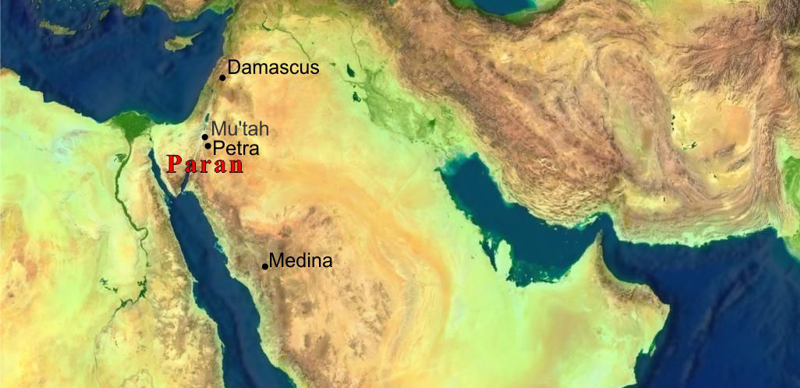
Paran spanned from lower Sinai into Arabia, including Wadi Rum
This entire area, both east and west of Wadi Araba has been called Paran by ancient writers, and was home to the ancient Nabataea people. Sebeos is quite clear that the armies left from this area, while the Islamic writers speak of Mecca and Medina. How can this be rectified? Well, let’s read more.
Later in the same chapter, Sebeos notes that talks about the second wave of Arab armies under ‘Umar came from the desert of Sinai, (not from Mecca or Medina in Arabia) When the sons of Ishmael had arisen and issued from the desert of Sinai, their king ‘Umar did not accompany them. Once again he locates the source of Muslim armies as coming from the north of Arabia, this time he calls Paran the Sinai. As we know, the Nabataeans, those ancient people, originated in the area of Paran, and while the Nabataean capital was at Petra, they had other cities in the Negev and the Sinai. So Sebeos once again identifies northern Arabia (although not Petra directly) as the homeland of the Arabs. He does not attribute this to Medina or Mecca in Saudi Arabia.
Now many Muslims use these passages to arguing about the existence of Muḥammad, but they miss the importance of the geography of this section. Sebeos supports the idea of northern Arabia as being the centre of the Muslims.
Now there is another Armenian writer, Thomas Artsruni, who, writing before his death in 887. And he tells us this. He says: At that time, in a place of Petrea Arabia Pharan, named Makka - The Mecca - he showed himself to bandits, warriors and band chiefs, worshiping in a temple… From this it is clear that the prophet Muḥammad was not born and raised in Mecca in Saudi Arabia, but he lived in a city of Mecca in Paran, in Arabia Petraea. Here the writer clearly calls it - the Mecca - and places it in southern Jordan.
Listen carefully. Thomas Artsuni gives the city two names: First he calls it Petrea Arabia Pharan. This is the Greek name. And then he tells us the Arabic name for the city: Makka, The Mecca. Why does he emphasize this? Because by the time of his writing Petra known as Mecca is abandoned, and Mecca in Saudi Arabia is the only Mecca still in existence.
Please understand the importance of this. As we have said before: The city of Petra had TWO names. To the Greeks it was known as: Petra, but to the Arabs: the city of Petra was known as Mecca.
And Thomas Artsuni says “The Mecca” just so you know for sure it’s the same thing.
It was not unusual for ancient cities to have different names given by different people at different times. So the Islamic records are not untrue when they talk about Muḥammad and Mecca; because Petra and Mecca at that time were the same place.
So when we read Islamic writings, we must remember that Mecca in Paran became and move to become to Mecca in Saudi Arabia. This is why my survey of early Islamic Qiblas is important, because it indicates when this change took place, and when we should understand that the literature is referring to Petra or to Mecca because both were known as Mecca. So which one is it? You must know the dates, and you must look at the Qiblas to determine when that change took place.
Now the third evidence is a large group of supporting people at the time.
Now back to talking about the historical evidence of Muḥammad. Not only are their coins shortly after his death, but there is evidence from surrounding nations within two or three years after Muḥammad’s death. And now, a third test. Is there is only is a question, is there only single mention of this person - or is there a large body of people who support this?
Listen within a hundred years of his death, there were so many followers of Muḥammad, that they had spread his name and his message over a very wide area, from Morocco all the way to Afghanistan.
If you come a tell me some obscure fact from ancient history and no one speaks of it or quotes it afterwards, then I might doubt it.
But if within a couple of years there are large crowds of people who attested to it, and who are willing to fight and die for it, then it is worth considering.
In the same way, when we question or when we hear of questions of the historicity of Jesus, within a few short years there were thousands of people who were willing to testify and die for him. This stands for something and should not be easily dismissed.
Now a fourth consideration is: Is there a large body of supporting ancient literature. We have not only the Hadiths and Histories written 250 years after the death of Muḥammad, but there are also letters and personal correspondents of people who have written about Muḥammad, and Islam. Today there is a very large body of supporting literature. The only way I can explain the existence of this literature, is that Muḥammad was a literal historical figure
Now last, what about other supporting evidences?
For example, there are inscriptions, written on rocks north west of Ṭāʾif in Saudi Arabia that are dated 78 years after the Hijra.
But if within a couple of years there are large crowds of people who attested to it, and who are willing to fight and die for it, then it is worth considering.
In the same way, when we question or when we hear of questions of the historicity of Jesus, within a few short years there were thousands of people who were willing to testify and die for him. This stands for something and should not be easily dismissed.
Now a fourth consideration is: Is there a large body of supporting ancient literature. We have not only the Hadiths and Histories written 250 years after the death of Muḥammad, but there are also letters and personal correspondents of people who have written about Muḥammad, and Islam. Today there is a very large body of supporting literature. The only way I can explain the existence of this literature, is that Muḥammad was a literal historical figure
Now last, what about other supporting evidences?
For example, there are inscriptions, written on rocks north west of Ṭāʾif in Saudi Arabia that are dated 78 years after the Hijra.
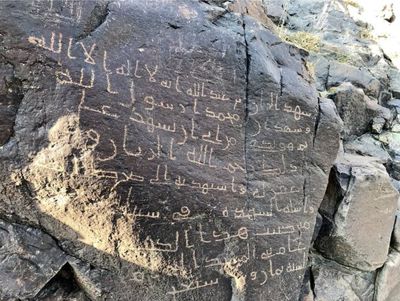
Muhammad's name mentioned 67 years after his death
These inscriptions include verses of the Qur’ān, supplications asking for forgiveness, mercy, martyrdom and paradise; trust and belief in the Prophet Muḥammad, and name him, and the sending of prayers and blessings upon him. One inscription stands out as it contains the full shahādah (or the testimony) and also mention of the building of Masjid al-Ḥarām that year. We have talked about in other videos. This is only78 years after the Hijra. And Muḥammad is named in a dated rock inscription.
Now Dr Sijpesteijn, is a doctor in Leiden University, and she tells us that from her research of papyri, shortly after Muḥammad’s death, there is already mention of the hajj. There is mention of zakat, the tax collection of tax. She has also come across a papyrus texts written around 725 CE which names both the prophet Muḥammad and Islam. Now, another argument for the existence of Muḥammad, is that when we go to the Middle East, we find the names of the ancient people and their gods that are mentioned in Islamic records. Thamud is there. So are the inscriptions that mention Dushara, Allat, Al Uzza, and the others. Just like the ancient Islamic records tell us. Now I argue that these are all found in northern Arabia, but my argument is really only about geography. I don’t claim that Muḥammad did not exist.
So what about people who argue that Muḥammad never existed? Ask them to prove that Muḥammad never existed! That is much harder to do.
Do people make up fictional leaders and then fight and die for them? Give us one example where we know for sure that this happened in ancient history! No, people do not die for fictional characters.
If Muḥammad was just a made-up fictional leader, do you not think that the Byzantines would have caught on and they would have argued against his existence?
We have records of a debate that took place between Leo III, he was a Byzantine Emperor, who was arguing with the caliph Umar II over whose religion was right. This is only 85 years after the death of Muḥammad. Did the Byzantines argue that Muḥammad was just another made-up fictional character? No. They argued that General Hajjaj had written great parts of the Qur’an and he had added to what Muḥammad had revealed. This is repeated several times, from several different sources and Umar doesn’t deny it. But the existence of Muḥammad is never questioned. Now, 1300 years later, there are scholars who want to question the existence of Muḥammad.
I am sorry. From all of this I conclude that it seems obvious to me that there is sufficient evidence to support that Muḥammad was a literal historical figure.
The question that people should really ask is: Was Muḥammad a true prophet? & What are the marks of a true prophet? But that will be the subject of another video, sometime in the future.
I am Dan Gibson, and this has been another video in the series Archeology and Islam.
Bibliography
Brosset, M., (translator) *Collection D’Historiens Armenien*s, L’Academie Imperiale Des Sciences, S. Petersbourg, 1894 (Includes the work of Artsruni)
Thomson, R.W., The Armenian History attributed to Sebeos, (Translator), commentary by J. Howard-Johnston, Assistance from T. Greenwood, 2 Volumes, Liverpool 1999.
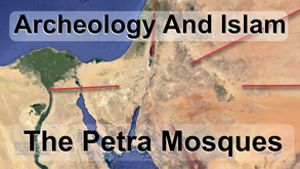
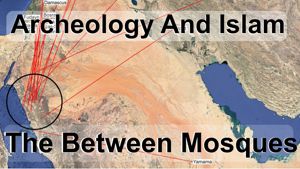
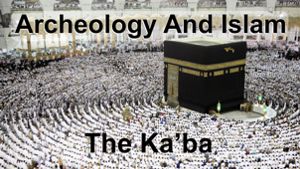
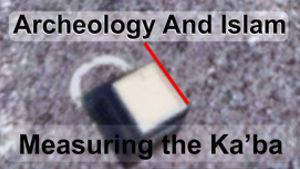
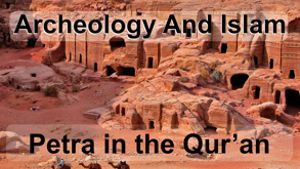
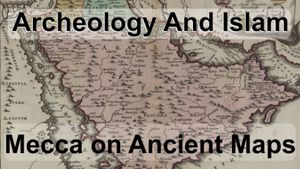
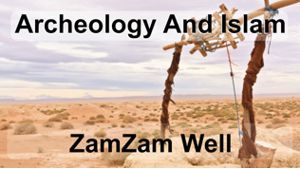
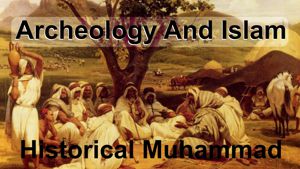
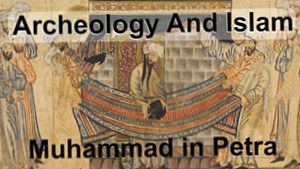
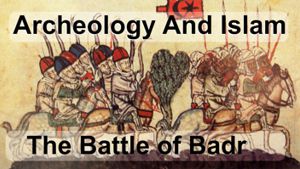
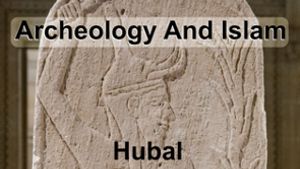
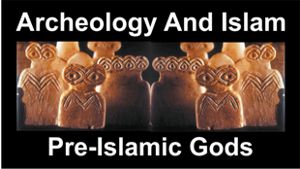
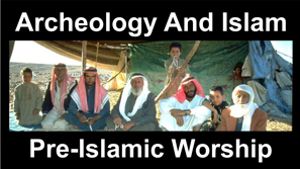
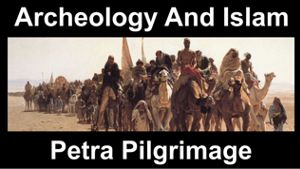
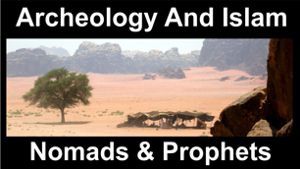
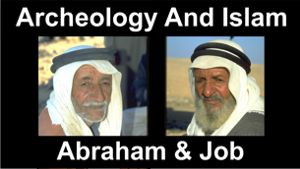
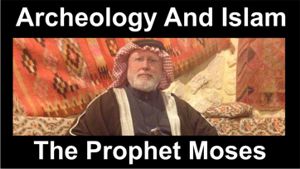
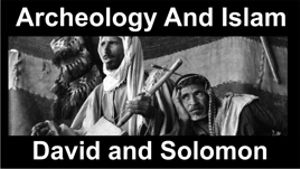
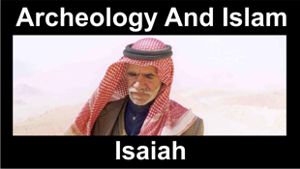
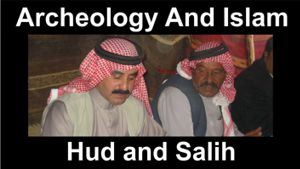

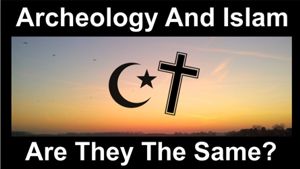
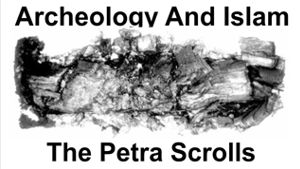
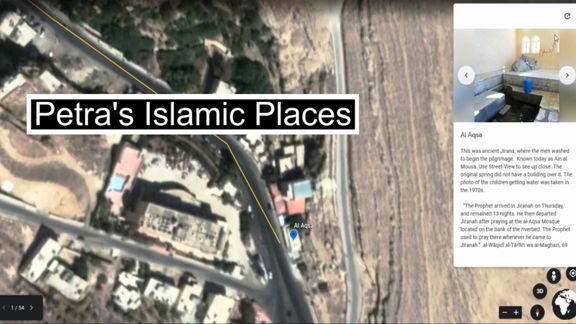

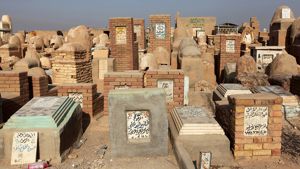
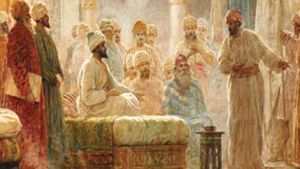
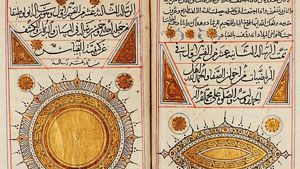
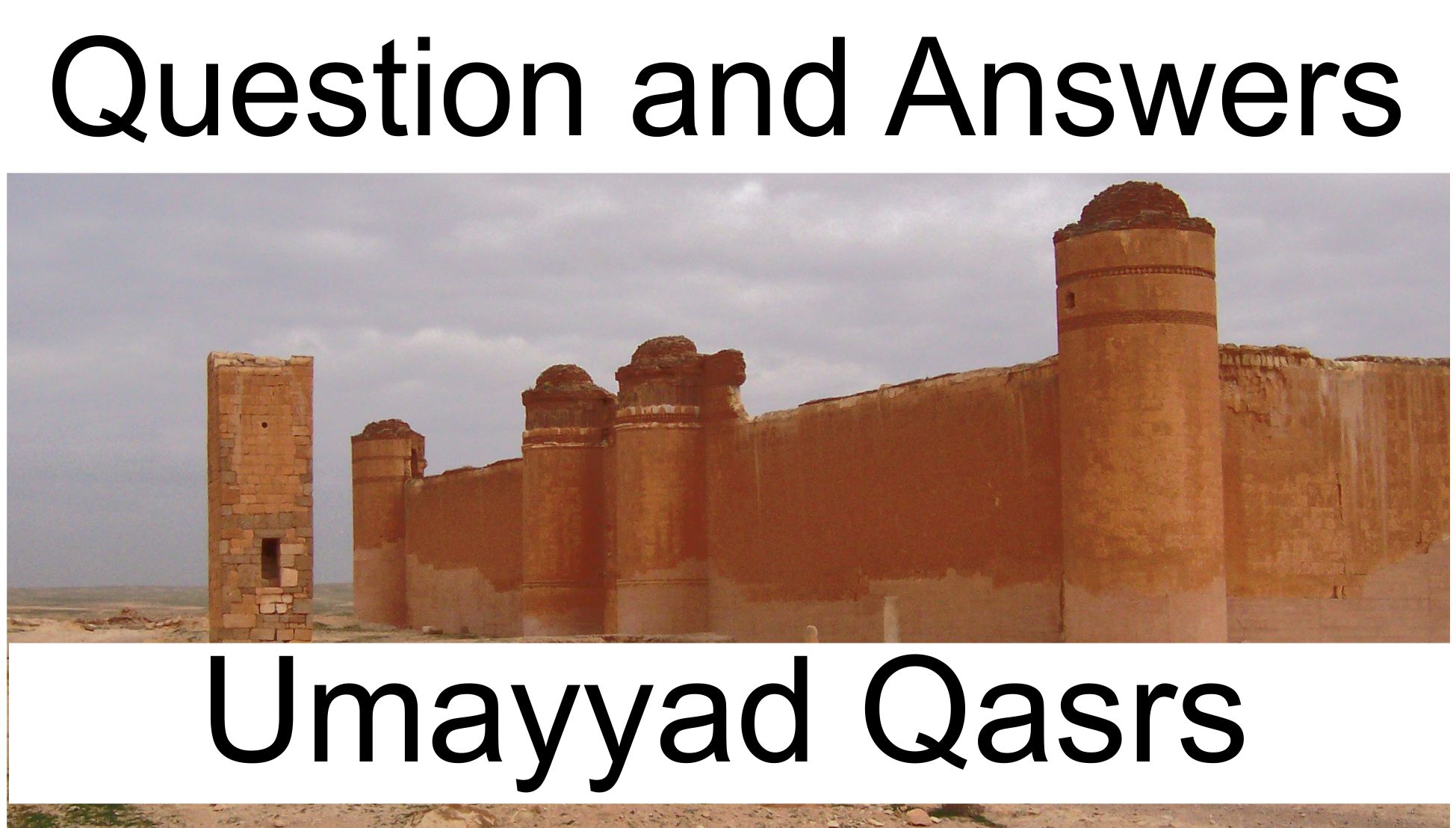
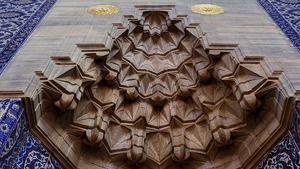
Page Discussion
Membership is required to comment. Membership is free of charge and available to everyone over the age of 16. Just click SignUp, or make a comment below. You will need a user name and a password. The system will automatically send a code to your email address. It should arrive in a few minutes. Enter the code, and you are finished.
Members who post adverts or use inappropriate language or make disrespectful comments will have their membership removed and be barred from the site. By becoming a member you agree to our Terms of Use and our Privacy, Cookies & Ad Policies. Remember that we will never, under any circumstances, sell or give your email address or private information to anyone unless required by law. Please keep your comments on topic. Thanks!